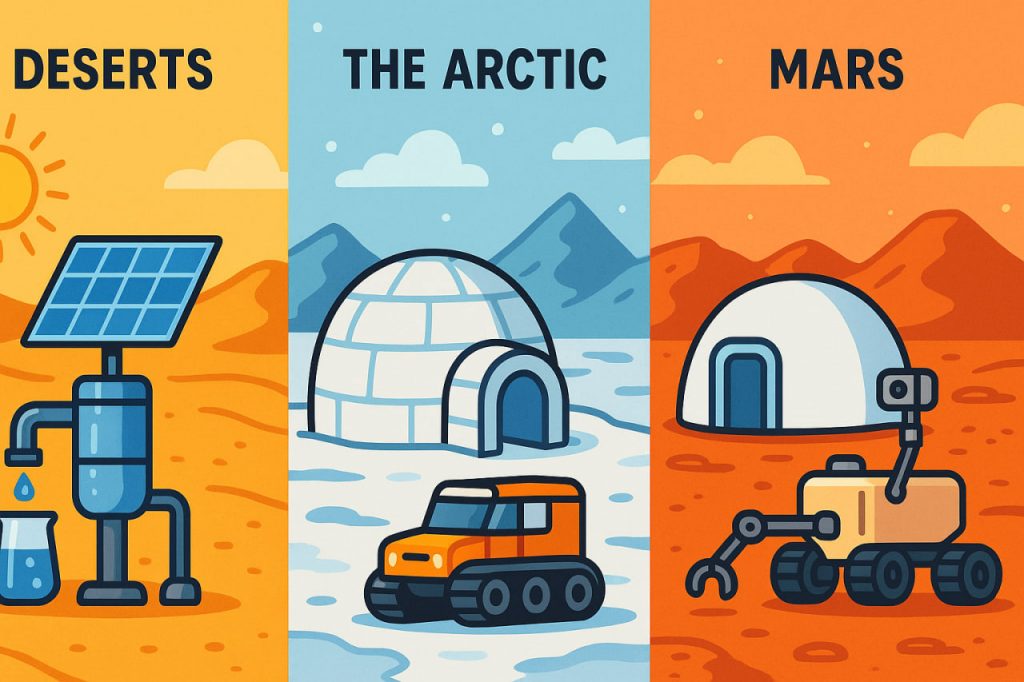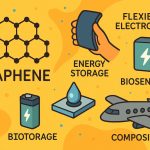Human innovation has always thrived in challenging environments. From scorching deserts to the freezing Arctic and even the barren landscapes of Mars, technology plays a crucial role in enabling survival, exploration, and development. These environments demand equipment, materials, and systems that can withstand extreme temperatures, limited resources, and harsh terrain.
Desert Technologies
Deserts present high heat, low humidity, and scarce water. To cope with these challenges, engineers have developed solar-powered desalination plants, water-harvesting devices that extract moisture from air, and cooling systems for vehicles and shelters. Special heat-resistant materials are used in infrastructure to prevent deformation under intense sun. Desert-based solar farms are also a growing source of renewable energy, taking advantage of abundant sunlight.
Arctic Technologies
In the Arctic, the main obstacles are extreme cold, ice, and limited daylight. Technologies include insulated habitats, ice-resistant vessels, and machinery with cold-weather lubricants that remain functional at -50°C. Satellite communication is vital in remote polar areas, enabling weather monitoring and navigation. Clothing uses aerogel insulation and advanced textiles to keep workers warm without restricting movement. Energy systems often rely on small modular reactors or hybrid renewable sources that can function during long polar nights.
Mars Technologies
Mars combines the worst of deserts and polar regions — thin atmosphere, low temperatures, high radiation, and dust storms. Technologies being tested include closed-loop life-support systems for air and water recycling, radiation-shielded habitats, and autonomous robots for construction and resource extraction. Mars rovers like Perseverance use nuclear-powered systems to endure cold nights and dust storms. Research into in-situ resource utilization (ISRU) aims to produce oxygen, water, and fuel from Martian materials, reducing reliance on Earth supplies.
Common Challenges and Solutions
Across all these environments, key technological needs overlap:
- Energy independence using solar, nuclear, or hybrid systems.
- Efficient water management through filtration, condensation, and recycling.
- Durable materials that resist corrosion, radiation, and extreme temperatures.
- Autonomous systems to reduce human risk in hazardous zones.
The Future of Extreme-Condition Technologies
As climate change and space exploration progress, these innovations will become increasingly important. Technologies perfected for Mars could be adapted for remote Earth regions, while Arctic and desert solutions can inform extraterrestrial colonization efforts. The exchange of knowledge between these fields will shape humanity’s ability to live and work anywhere.
Glossary
- Desalination – The process of removing salt from seawater to make it drinkable.
- Aerogel insulation – Ultra-light, highly insulating material used in extreme cold.
- ISRU (In-situ resource utilization) – Using local materials to produce needed resources like oxygen or fuel.
- Radiation-shielded habitats – Structures designed to protect inhabitants from harmful cosmic and solar radiation.
- Closed-loop life-support system – A system that recycles air, water, and waste for long-term human survival.


